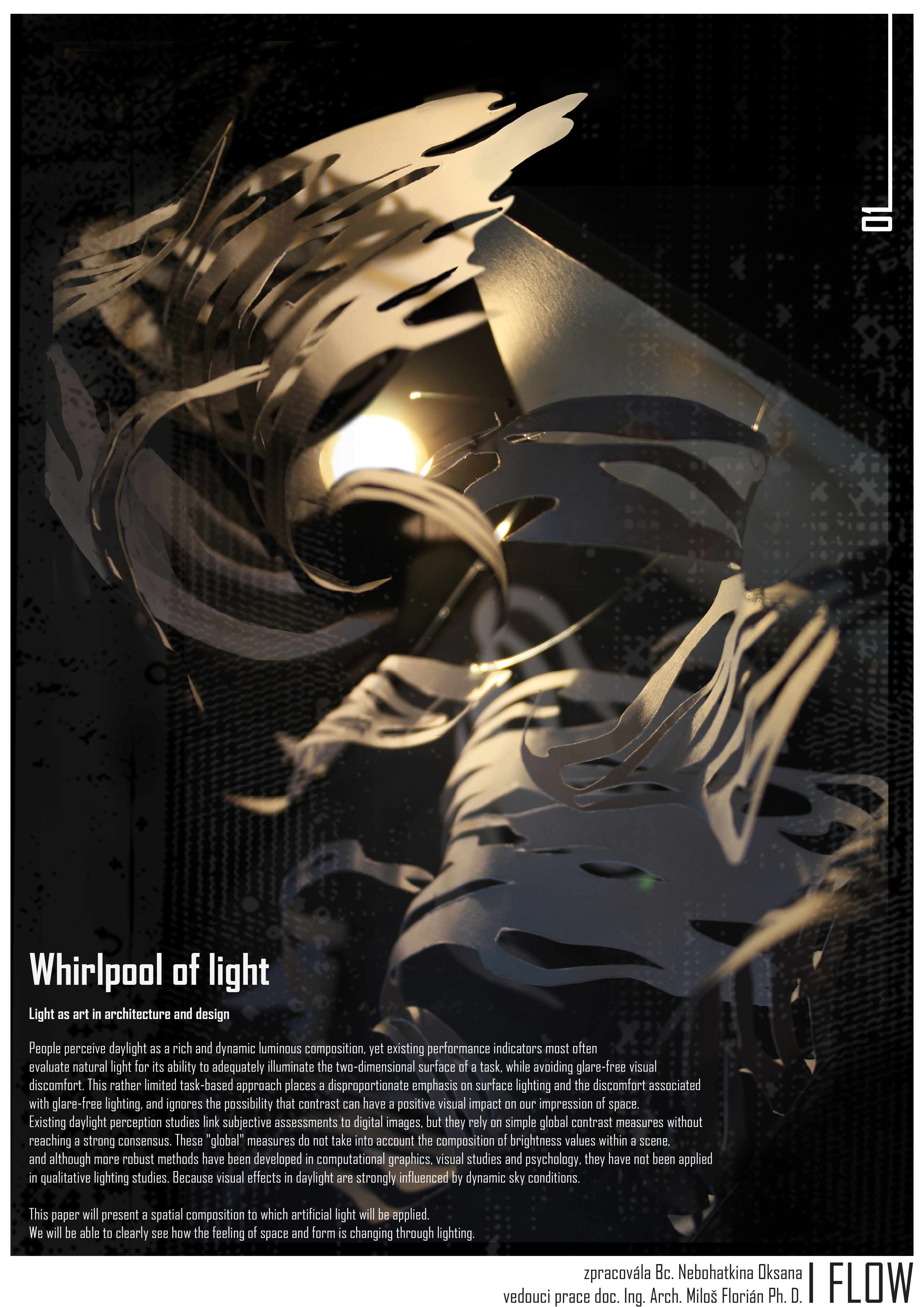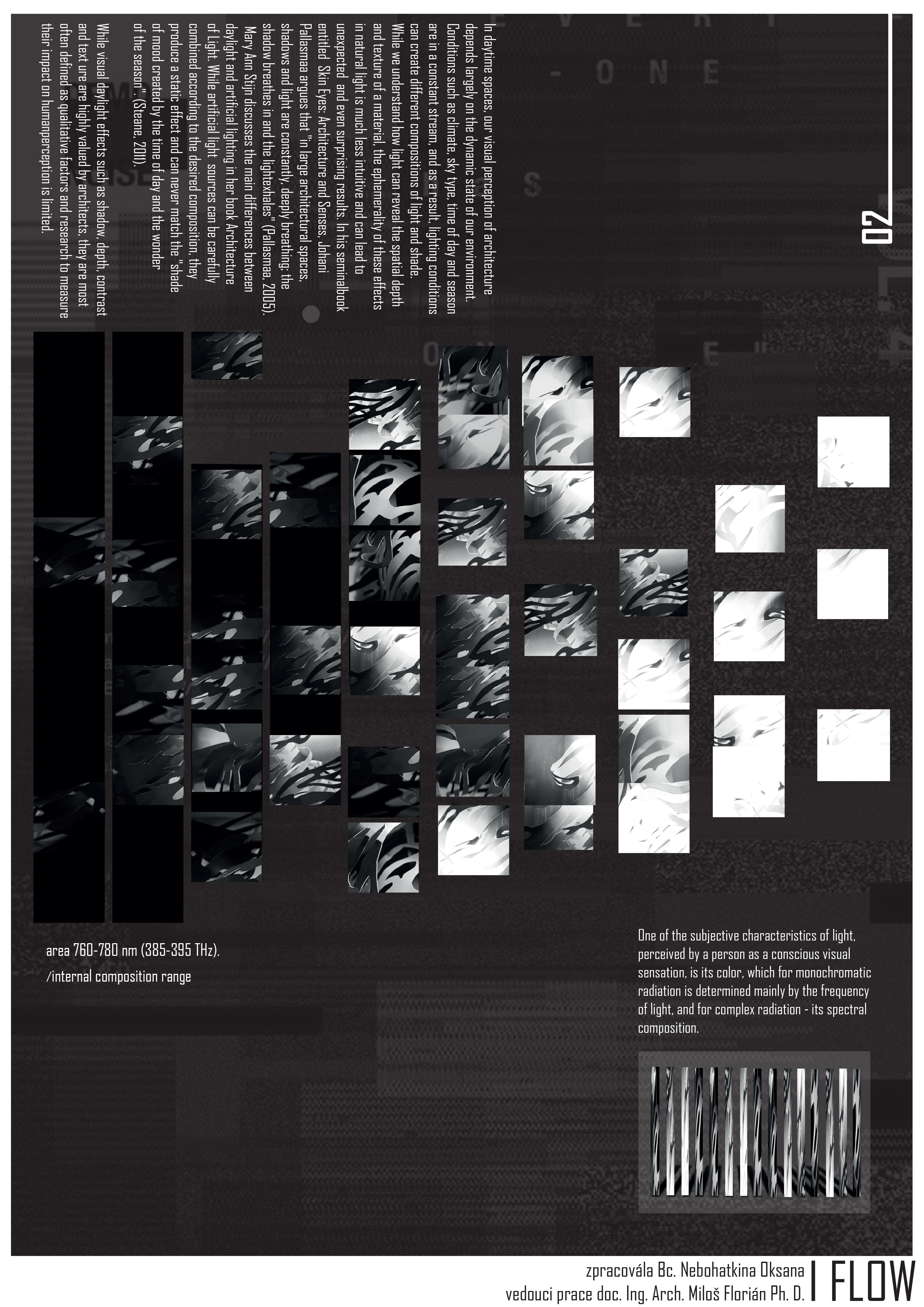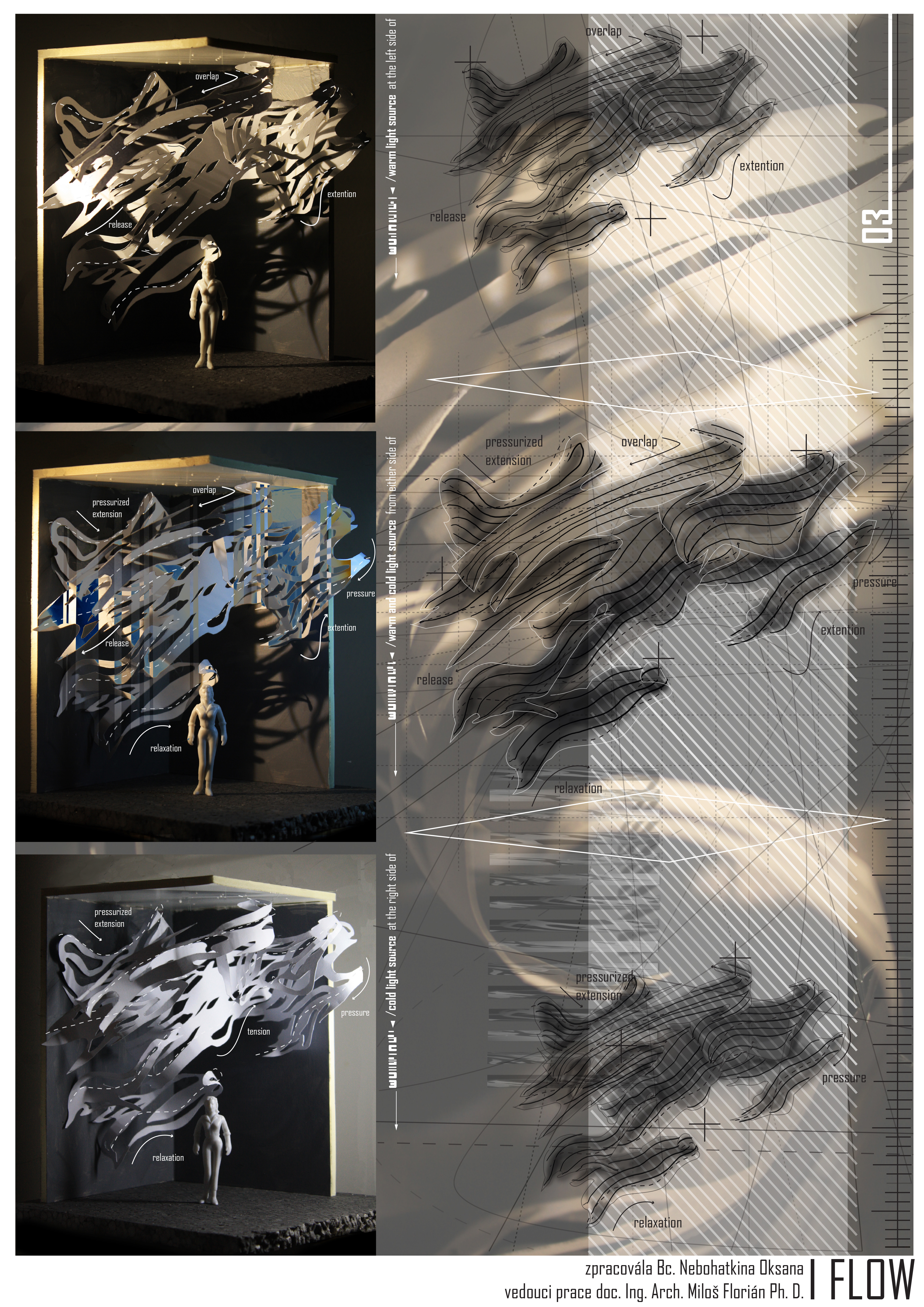Nebohatkina Oksana | Whirlpool of light
Light as art in architecture and design.
.
People perceive daylight as a rich and dynamic luminous composition, yet existing performance indicators most often evaluate natural light for its ability to adequately illuminate the two-dimensional surface of a task, while avoiding glare-free visual discomfort. This rather limited task-based approach places a disproportionate emphasis on surface lighting and the discomfort associated with glare-free lighting, and ignores the possibility that contrast can have a positive visual impact on our impression of space. Existing daylight perception studies link subjective assessments to digital images, but they rely on simple global contrast measures without reaching a strong consensus. These "global" measures do not take into account the composition of brightness values within a scene, and although more robust methods have been developed in computational graphics, visual studies and psychology, they have not been applied in qualitative lighting studies. Because visual effects in daylight are strongly influenced by dynamic sky conditions.
In daytime spaces, our visual perception of architecture depends largely on the dynamic state of our environment. Conditions such as climate, sky type, time of day and season are in a constant stream, and as a result, lighting conditions can create different compositions of light and shade. While we understand how light can reveal the spatial depth and texture of a material, the ephemerality of these effects in natural light is much less intuitive and can lead to unexpected and even surprising results. In his seminalbook entitled Skin Eyes: Architecture and Senses, Johani Pallasmaa argues that "in large architectural spaces, shadows and light are constantly, deeply breathing; the shadow breathes in and the lightexhales" (Pallasmaa, 2005). Mary Ann Stijn discusses the main differences between daylight and artificial lighting in her book Architecture of Light. While artificial light sources can be carefully combined according to the desired composition, they produce a static effect and can never match the "shade of mood created by the time of day and the wonder of the season". (Steane, 2011). While visual daylight effects such as shadow, depth, contrast and text ure are highly valued by architects, they are most often defined as qualitative factors and research to measure their impact on humanperception is limited.
This paper will present a spatial composition to which artificial light will be applied. We will be able to clearly see how the feeling of space and form is changing through lighting. |



|

